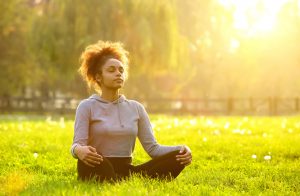Deep Breathing and Guided Imagery for Anxiety
 In counseling, many of the ways to address anger can also be used as tools to address anxiety. Deep breathing is one such tool. Getting that full, deep breath of oxygen will indeed help both our mind and body. Sadly, we may not stop to focus on our breathing or take in enough of that good oxygen. Furthermore, in times of distress, rapid breathing is more likely and will not help the thinking process or our ability to calmly make decisions.
In counseling, many of the ways to address anger can also be used as tools to address anxiety. Deep breathing is one such tool. Getting that full, deep breath of oxygen will indeed help both our mind and body. Sadly, we may not stop to focus on our breathing or take in enough of that good oxygen. Furthermore, in times of distress, rapid breathing is more likely and will not help the thinking process or our ability to calmly make decisions.
When I sit in session and show clients that taking that breath is a bit more than a second or two process, they seem confused. Yet nearly everyone reports feeling remarkably calmer after trying it. Personally, I like to close my eyes so I am not focused on what is around me. Imagine as you take in that full breath through your nose that you are soaking in positive energy. Hold it a second or two, and then slowly breathe it out through your mouth. This is not a race. In fact, try to expel it slowly. Slowing down your breathing will mean you are slowing down your mind and body.
Now, in the process of this deep breathing, let’s add some guided imagery. For this, think of a calm place. I would like this to be somewhere you feel relaxed and positive. For me, it is the beach. I want you to see yourself there without having to focus on where else you may need to be or other things you may need to be doing.
Experience as many of the senses as possible. For example, sitting on the sand, I can feel it between my toes. I can feel the warmth of the sun on my arms. I can smell the cool beach air and the scent of suntan lotion, and I can hear the gentle crashing of the waves and even children playing off in the background. I can also see the beauty of the area, as I watch the birds in the distance over the water. The beach is a calming place for me, so as I take in my deep breaths, I imagine soaking in the warmth and wonder of it, even as I am in my car, home, or wherever I am practicing.
The more senses you can envision, the easier it is to remain focused in the moment. Some people choose amusement parks or other loud venues. That’s okay as long you can focus and keep to your steady breathing pattern. The goal here is to consciously and intentionally slow our minds down while adding these positive and relaxing components. When asked if you should practice this when anxiety is creeping up, I say to try and practice these tools at least a few times a day. I don’t want you to have to wait until the anxiety is noticeable. Rather, if we are practicing relaxation, we will not only be in a better position to deal with it in those moments, but hopefully even fend some of it off in the first place via a calmer, more relaxed you.
Your mind is indeed a powerful tool. We hear about sharpening it with memory exercises and such to enhance our cognitive skills, but what about teaching it to relax? We live in a fast-paced society where expectations can be massive and relaxation is not taught in school. Rather, we learn how to be better students and thus more successful human beings. You need to teach your mind and body to calm down and be okay with relaxing once in awhile.